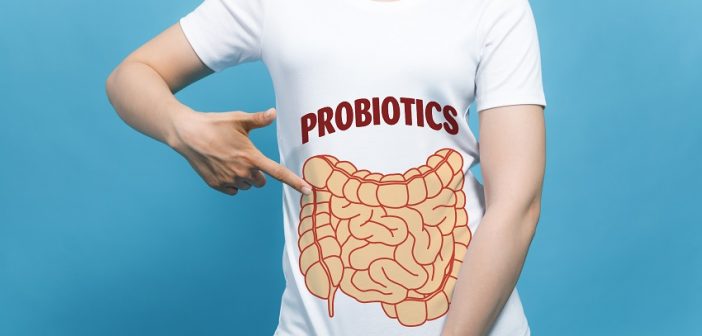Probiotics, or is it prebiotics? Is it available in any type of yogurt or special greek ones?
Alright, probiotics have become rather popular as a compound to actively seek in our food, or even to take as a supplement. After all, there are almost four million Americans already taking probiotics to support their immune function, their digestive health, and even their lactose intolerance.
If this is the first time you’re hearing about probiotics, don’t worry. We’ve got you covered. Keep reading for our full breakdown of the different types of probiotics, the key benefits of adding probiotics to your daily routine, as well as how to pick the right supplement for your needs.
What Are Probiotics?
Let’s start with the basics.
In the simplest terms, probiotics are active and live microorganisms, like bacteria and yeast, that have proven to be healthy for humans.
Whether you’re ingesting them in the form of foods and drinks, or the form of supplements, people take probiotics to increase the amount of “good bacteria” that live in your intestines. This is also known as your gut’s microbiome.
The Different Types of Probiotics: The Most Common Species
Taking a look at the current probiotics market, you’ll find two main groups of probiotics, which are Bifidobacterium and lactobacillus.
These are considered the two key species of probiotics, and within those species, there is a variety of different strains and subcategories depending on the problem areas you’re trying to tackle. Basically, each collection of strains will have a different effect on your body.
1. Bifidobacteria
The first species is the Bifidobacteria-based probiotics. You’ll find this one commonly used in supplements and different food products.
These are known to target and support your immune system, eliminate the growth of harmful bacteria, specifically in your intestines, as well as help break down any lactose in your body into beneficial nutrients that your body can use.
2. Lactobacillus
On the other hand, we have the Lactobacillus species of bacteria, which produces lactase. This enzyme is responsible for breaking down the sugar available in milk, also known as lactose. Also, these are the same bacteria that produce lactic acid. Generally speaking, lactic acid helps with keeping the population of bad bacteria under control.
Moreover, you’ll be interested to know that the lactobacillus bacteria can be found naturally in these areas in your body: your small intestine, your mouth, as well as your vagina (if you have one).
The Common Strains of Probiotics
Now that you’re familiar with the two main categories of probiotics, you’re ready to explore the different strains that belong to each species.
You’ll find that all strains of probiotics either start with “B.” or “L.” Those stand for either Bifidobacteria or Lactobacillus species of probiotics, then followed by the individual strain name, like acidophilus, for example. Here are the six most common strains of probiotics that you’ll find on different supplements and food labels.
- B. animalis: This one is commonly found in yogurt, like Dannon’s “Activia” product. It targets your digestion and aids with fighting food-borne bacteria. Also, it’s marketed as an immunity helper.
- B. breve: This strain of probiotics tends to live in your vaginal area, as well as your digestive tract. It’s responsible for fighting off any infection that’s caused by harmful bacteria or years. Moreover, it’s known to help your body absorb good nutrients by fermenting sugars.
- B. lactis: B.Lactis is derived from raw milk. For instance, if you’re using infant formula, you might have heard about specific formulas that are infused with probiotics that help start “good natural cultures.” Besides, these bacteria are used as starters for different types of cheeses, and buttermilk.
- B. longum: This is a great strain that aids with breaking down carbohydrates, behaves like an antioxidant, and lives in your gastrointestinal tract.
- L. reuteri: A study has shown that this strain helped decrease the number of oral bacteria that are responsible for causing (and accelerating) tooth decay. It’s found naturally in our mouths and intestines.
- L. acidophilus: Whether you’re a fan of miso soup or fermented soy products, this strain helps fight off vaginal bacteria, and is naturally found in the vagina and the small intestines.
There are many other probiotics strains available on the market, but those six are the most common ones and the ones that have been well-studied thus far.
Why Take Probiotics?
You might be thinking, “well, we’ve been doing good so far, so why do we need probiotics?”
There is no definite answer, but a couple of theories about the cultural changes and how it has impacted our diets have shown the sheer impact it had on our gut flora, negatively.
With the use of probiotics, our usual fare of food that’s been lacking in gut-healthy elements, with the improved sterilization of foods. The issue with our “clean” foods is that they can become “too clean.” The modern processes of sterilization have eliminated all the bacteria in our foods, both the good and the bad.
Overall, some core benefits have people taking probiotic supplements in droves. For example, probiotics have shown great results in boosting our immune system, reducing harmful bacteria, and improving the strength and thickness of the mucus that lines our intestines.
In short, you’ll want to add some probiotic gummies to your kids’ morning routine as soon as possible.
How to Choose the Right Probiotic Supplement
The very first step would be conducting research and selecting a reputable and high-quality manufacturer.
The unique thing about probiotics is that if you get a mediocre supplement, then you might get bacterial strains that aren’t even alive to do their job well.
That’s why it’s a great idea to check whether your probiotic is tested by a third-party lab, so the bacterial colony is confirmed to be alive and well.
Ready to Explore the World Of Probiotic Supplements?
We completely understand how overwhelming the process of selecting the right probiotic supplement can be, especially if you’re a novice.
Hopefully, our guide into the intricacies of probiotic supplements, as well as the different types of probiotics that you’ll meet on your way has shed some light on what makes a good probiotic supplement and what doesn’t.
Just remember to always read the dosing instructions of your probiotic product, and you’re good to go.





Thank you for this article. It was good to know. In general, I think it’s important to understand how different antibiotics and probiotics can affect your body. It is as a powerful a pain reliever as oxycodone, if used improperly can harm your health and cause addictions or other side effects.